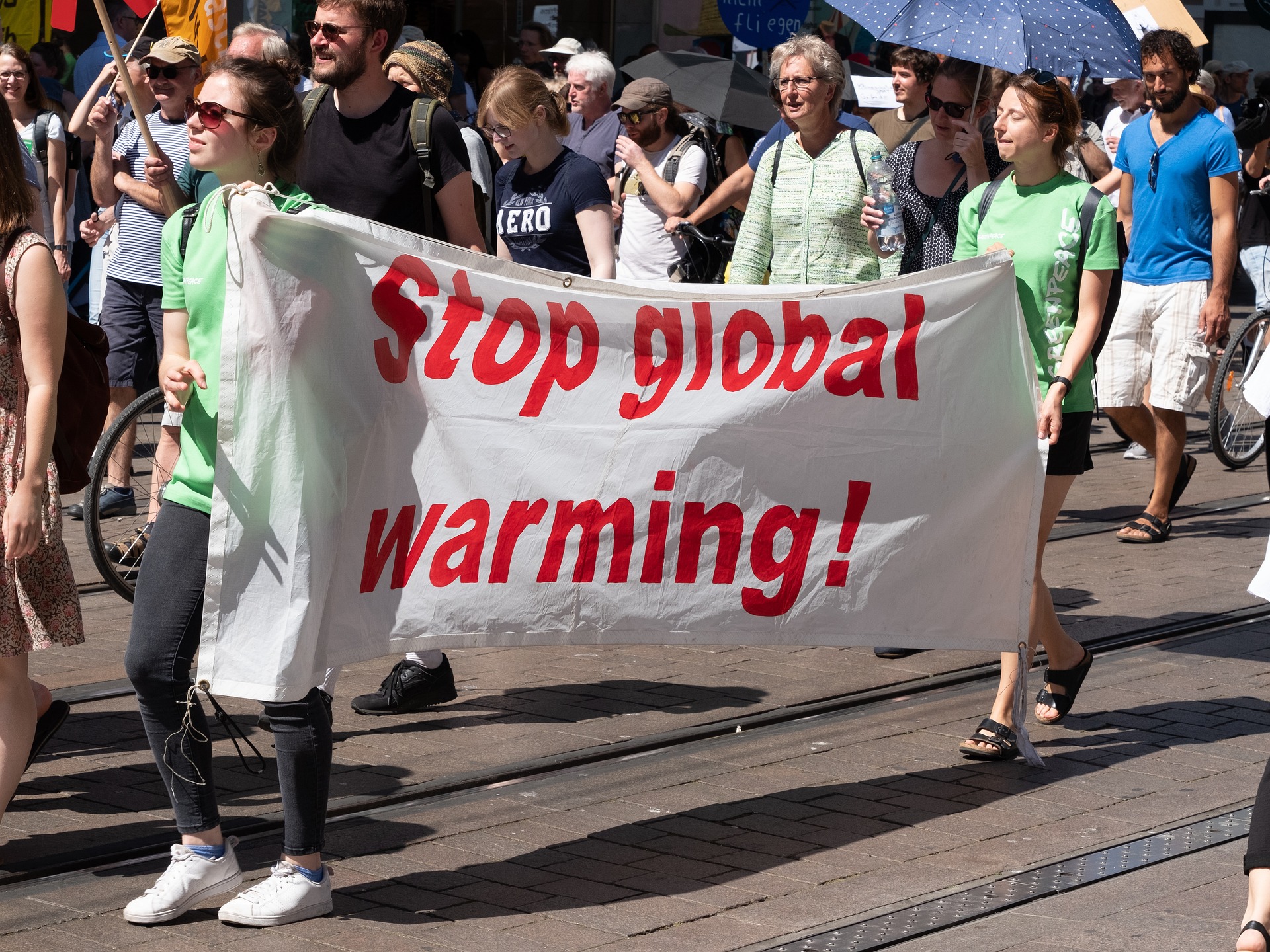
 By Dr Prem N Sharma*
By Dr Prem N Sharma*
Sustainable lifestyle for Green House Gases emissions sequestration
What can an individual, his family and his community do to reverse global warming? It may be noted that lifestyle has been accepted to be a significant factor in the increase in Green House Gases emissions, hence, in global warming (2022 COP 27). This was taken after a long effort on the pattern of Mission LIFE of India and Mahatma Gandhi’s teaching, “Be the change you want to see”.
There are many actions, we as individuals, families and communities, can take to mitigate the negative impact of GHG. Thus it is wrong to consider the “way of living” as sacred as being followed by many nations and societies. Out of these actions, the most important is to help build consensus to choose only those governments who respond to global warming. Investing only in green funds will also go a long way in mitigating global warming.
Vegans/vegetarians have at least 10 times smaller carbon footprints than red meat eaters. More efficient electric home/industrial appliances/ machinery and vehicles have already reduced GHG emissions as the net annual rate of global warming has fallen from 3% to 0.5% in the last 10-20 years. More activities having a very significant impact on GHG mitigation can be read in Table 1. Likewise, Table 2 gives the salient adaptive actions to be taken to live with already increased temperatures.
Conserving natural resources individually, at the family and community levels can reduce our carbon footprint drastically. Hence carbon credits to farmers need to be institutionalized just like for forestry. Unsustainable subsidies are negative incentives and increase GHG hence promoting global warming. Rather incentivize actions that reduce emissions. Many more such adaptations are given in Table 2.
Table 1: Mitigation actions by individuals, their families and community as a part of salient sustainable lifestyle activities resulting in carbon sequestration
| Activity | CO2eq saving compared to without the activity/ties over 20-25 year time horizon unless specified below | ||
| (A)
M I T I G A T I O N |
(a)
I N D I V I D U A L L Y |
Build consensus to vote for candidates with the best climate change policies and nature conservation | BIG but Unquantifiable |
| Invest wisely only in green funds including promoting the same for your pension and other community funds e.g. in solar power, wind power, H power, and low C power plants | BIG but Unquantifiable | ||
| (1) Fossil fuel Sector | |||
| Use LED lights, dry clothes in the sun | 40% | ||
| Use the latest household appliances (e.g.: refrigerators, washing machines, electric dryers, water kettles/coffee makers, irons, rooftop water heaters etc) | 50% | ||
| (2) Transport Sector | |||
| Walk or use bicycles, buses/metros, efficient cars | 10-50% | ||
| Reduce air travel to a minimum | 8 Kg/100 Km distance | ||
| (3) Agriculture Sector | 30-50% | ||
| i. Forestry sub-sector | |||
| Stop all deforestation for any purpose | 80% | ||
| Stop fuelwood use, go paperless | 30-100% | ||
| Use least wood and plastics | 10-30% | ||
| ii. Pasture/Livestock sub-sector | |||
| Eat less milk/meat products | 10-30% | ||
| iii. Crop production and food consumption-sector | |||
| Eat more organic food to increase SOM | 2-3%/year | ||
| Eat more vegan/vegetarian food – (2-5 kgCO2eq/Kg compared to 65 kgCO2eq/Kg of cooked beef) | 3-8%/Kg cooked food | ||
| Eliminate food waste | 50% | ||
| Keep your own digestive systems healthy | 30% | ||
| Reduce heartburn, heart breaks and attacks! | |||
| i. Forestry sub-sector | |||
| Protect all green spaces and forests/woodlots/trees | 10-50% | ||
| ii. Pasture/Livestock sub-sector | |||
| Rehabilitate all pasture lands and their water bodies | 10-30% | ||
| iii. Crop production and food consumption-sector | |||
| Use minimum tillage conservation agriculture specially agro-silvopastoral systems | 50% | ||
| Use more bio-fertilizers and covered organic compost | |||
| Protect wetlands and water bodies, conserve nature | 4-5 t/yr | ||
Table 2: Adaptation actions by individuals, their families and communities as a part of salient sustainable lifestyle activities for carbon sequestration
| Activity | CO2eq saving compared to without the activity/ties over a 20-25 year time horizon unless specified below | ||
| Eliminate subsidies that increase global warming | BIG but requires quantifiable | ||
| Promote Carbon credit schemes to farmers for C sequestration and insurance for crop losses | BIG but needs quantification | ||
| (B)
A D A P T A I T O N |
(a) I
N D I V I D U A L L Y |
(1) Fossil Fuels | |
| Insulate homes better | 30% | ||
| Use LNG/CNG gas (or solar) cookers/heaters | 70-80% | ||
| (2) Transport Sector | |||
| Keep your vehicles well repaired & serviced | 10-20% | ||
| Replace old vehicles with new hybrids or EVs | 20-70% | ||
| (3) Agriculture Sector | |||
| i. Forestry sub-sector | |||
| Promote home gardens with leguminous flowers/trees/fruit trees | |||
| ii. Pasture/Livestock sub-sector | |||
| Promote grasses e.g. in lawns, open spaces | 10-30% | ||
| Promote kitchen gardens with small ruminants | 10-30% | ||
| iii. Crop production and food consumption-sector | |||
| Conserve land, water, trees, grasses, green spaces and wetlands | 6t/yr | ||
| (b)
F A M I L y/ C OMMU NI TY |
Promote redirection of more CC funds to Ag. sector | ||
| () Agriculture Sector | |||
| i. Forestry sub-sector | |||
| Plant trees | 30-50% | ||
| ii. Pasture/Livestock sub-sector | |||
| Keep your animal’s digestive systems healthy by mixing additives to feed/fodder | 30% | ||
| Stall feed your animals as much as possible | 30% | ||
| iii. Crop production and food consumption-sector | |||
| Enrich Soil Organic Matter (SOM) to 4-5% of topsoil | 1.5-2 t/ha/year | ||
| Rehabilitate water ponds/bodies and harvest more water | 4-5 t/yr | ||
| Promote urban and peri-urban agriculture (UPA) | 2-3 t/yr | ||
Additional Policy issues for Sustainable lifestyle
Many policy issues are raised if sustainable lifestyles are to be followed by individuals, families/communities and nations. Most important is Mahatma Gandhi’s teaching “Be the change you want to see”. Salient lifestyle-related policy options are summarized here:
- Promote consensus in favour of political candidates and parties for governance that promotes environment-friendly policies and vote accordingly.
- Campaign against subsidies that increase GHG and promote incentives for climate-friendly action.
- Promote carbon credit for compensating farmers for their land, water, forest, wetlands, green spaces conservation and rejuvenation actions on the pattern of carbon credits for forestry.
- Promote vegetarianism with the least meat and milk products.
- Permit only the latest models of energy-efficient home appliances, vehicles and industrial machinery.
- Promote research in quantifying the impact of the above and all other proposed actions to mitigate and adapt to climate change.
*Retired International Senior Natural Resources/Watershed Management and Senior Operations Officer of the FAO-UN on global postings across continents. The views expressed are personal.





